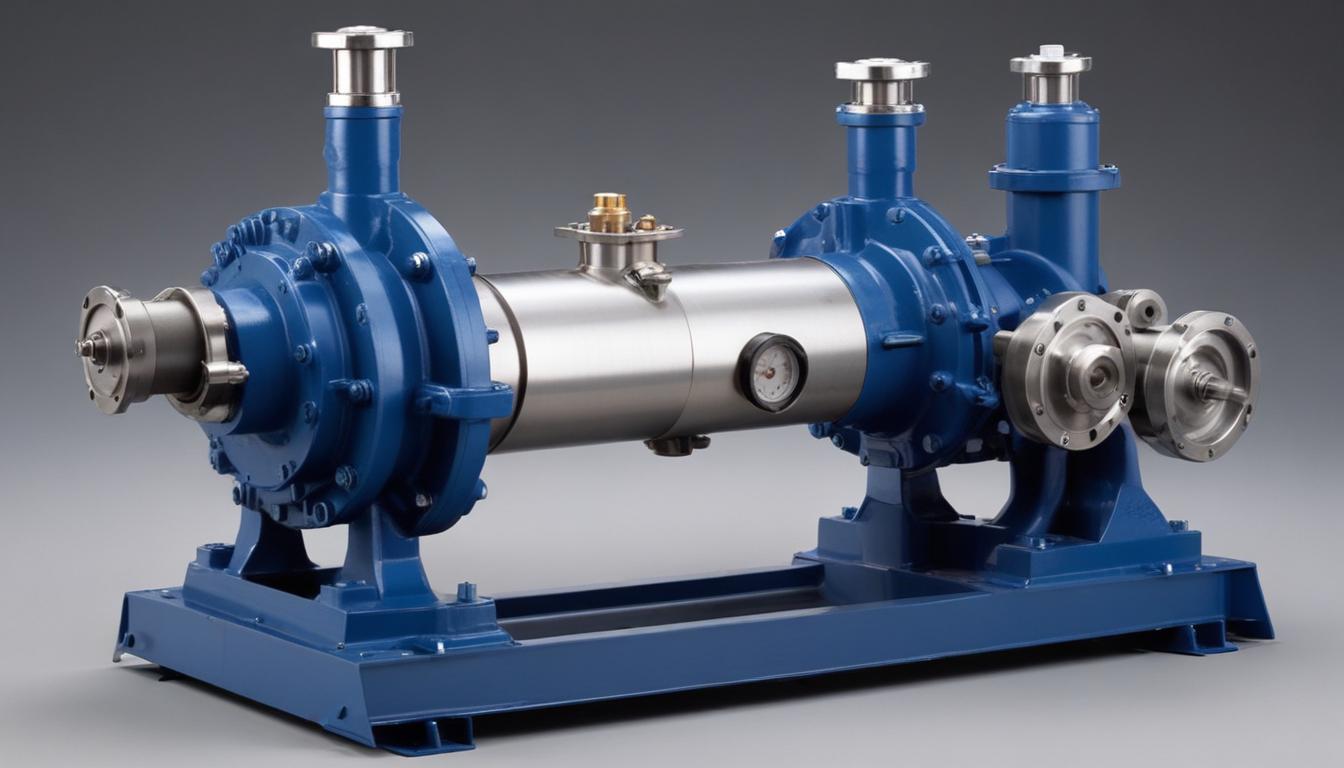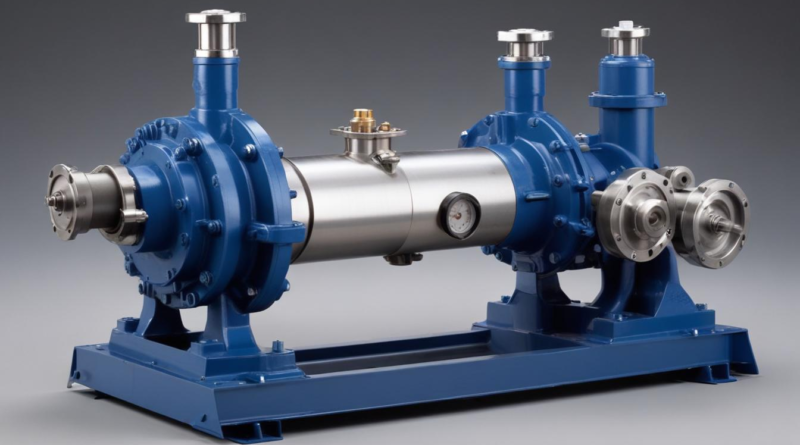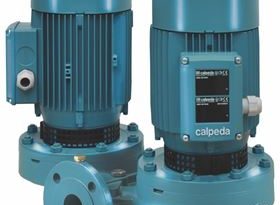how to select a pump for high-pressure applications
Understanding the pressure requirements is fundamental in the selection of a pump for high-pressure applications. Accurately determining the necessary pressure ensures optimal pump performance and longevity.
Begin by identifying the maximum operating pressure your system will encounter. This involves analyzing the process parameters, including:
- Process fluid characteristics: Viscosity, temperature, and chemical composition.
- System resistance: Friction losses in pipes, fittings, and other components.
- Elevation changes: Head loss due to vertical movement of the fluid.
To calculate the required pressure, consider the following factors:
| Factor | Impact on Pressure |
|---|---|
| Flow Rate (Q) | Higher flow rates typically require higher pressure. |
| Pipe Diameter and Length | Narrower and longer pipes increase pressure loss. |
| Fluid Viscosity | More viscous fluids require more pressure to maintain flow. |
Assessing these factors will help determine the pressure requirements essential for selecting the appropriate pump types. High-pressure applications may demand pumps capable of delivering pressures ranging from a few hundred to several thousand psi, depending on the specific needs of the process.
Additionally, consider the safety margins to account for potential pressure surges or system expansions. Typically, a safety factor of 10-20% above the calculated maximum pressure is recommended to ensure reliable operation under varying conditions.
By thoroughly understanding and calculating your system’s pressure requirements, you can make an informed decision when choosing the right high-pressure pump, ensuring efficiency and reliability in your application.
selecting the right pump type
Selecting the appropriate pump type is crucial for ensuring efficient and reliable operation in high-pressure applications. Various pump types offer distinct advantages depending on the specific requirements of the process. Key considerations include the nature of the fluid, required pressure and flow rate, operating conditions, and maintenance capabilities.
Common Types of High-Pressure Pumps:
- Piston Pumps: Utilize reciprocating pistons to generate high pressure, making them ideal for applications requiring precise flow control and high energy efficiency.
- Gear Pumps: Employ interlocking gears to move fluid, suitable for moderate pressure applications with relatively simple maintenance needs.
- Diaphragm Pumps: Use a flexible diaphragm to displace fluid, offering excellent chemical resistance and suitability for abrasive or corrosive fluids.
- Plunger Pumps: Similar to piston pumps but designed for even higher pressures, often used in hydraulic systems and high-pressure cleaning.
- Screw Pumps: Feature helical screws to transport fluids, providing smooth and continuous flow with minimal pulsation.
Factors to Consider When Selecting Pump Types:
- Pressure Requirements: Ensure the pump type can consistently achieve the necessary pressure levels without compromising performance.
- Flow Rate: Match the pump’s capacity with the system’s flow rate demands to prevent bottlenecks or overloading.
- Fluid Characteristics: Consider the viscosity, corrosiveness, and presence of particulates in the fluid to select a pump with appropriate material compatibility and sealing mechanisms.
- Energy Efficiency: Evaluate the pump’s energy consumption relative to its performance to optimize operational costs.
- Maintenance and Reliability: Choose a pump type that aligns with your maintenance capabilities and offers reliable operation with minimal downtime.
Comparative Analysis of Pump Types:
| Pump Type | Advantages | Disadvantages | Typical Applications |
|---|---|---|---|
| Piston Pumps | High pressure capability, precise control, energy efficient | Complex design, higher maintenance | Hydraulic systems, chemical processing |
| Gear Pumps | Simple design, reliable, good for viscous fluids | Limited pressure range, potential for wear | Lubrication systems, fuel transfer |
| Diaphragm Pumps | Excellent chemical resistance, handles abrasive fluids | Lower flow rates, diaphragm wear | Chemical dosing, wastewater treatment |
| Plunger Pumps | Extremely high pressures, robust construction | Higher cost, larger footprint | Hydraulic presses, high-pressure cleaning |
| Screw Pumps | Smooth, continuous flow, low pulsation | Higher initial cost, sensitive to fluid contamination | Oil and gas, food processing |
By conducting a thorough analysis of each pump type’s characteristics and aligning them with your system’s specific needs, you can make an informed selection that enhances performance and ensures the longevity of your high-pressure pump installation.
evaluating material compatibility
Selecting materials that can withstand the operational environment is critical for the reliable performance of high-pressure pumps. Ensuring material compatibility involves evaluating how the pump’s construction materials interact with the process fluids, operating temperatures, and pressures. Incompatible materials can lead to corrosion, wear, and ultimately, pump failure, which can result in costly downtime and maintenance.
Key Considerations for Material Compatibility:
- Chemical Resistance: The materials selected must resist the chemical composition of the fluid being pumped. This includes resistance to acids, bases, solvents, and oxidizing agents.
- Wear Resistance: High-pressure applications often involve abrasive fluids or particles that can cause significant wear. Selecting materials with high hardness and durability is essential to prolong pump life.
- Temperature Tolerance: The materials must maintain their integrity and performance at the operating temperatures, whether they are subjected to extreme heat or cold.
- Mechanical Strength: Materials must withstand the stresses and strains imposed by high-pressure operations without deforming or failing.
- Compatibility with Sealing Mechanisms: Seals and gaskets must be made from materials that are compatible with both the pump construction and the process fluid to prevent leaks and ensure longevity.
Common Materials and Their Applications:
| Material | Advantages | Applications |
|---|---|---|
| Stainless Steel | Excellent corrosion resistance, high strength, durable | Chemical processing, oil and gas, pharmaceuticals |
| Carbon Steel | High strength, cost-effective | Hydraulic systems, high-pressure water pumps |
| Bronze | Good corrosion resistance, wear-resistant | Marine applications, abrasive fluid handling |
| PTFE (Teflon) | Exceptional chemical resistance, low friction | Seals, gaskets, corrosive fluid applications |
| Inconel | Superior corrosion and high-temperature resistance | Aerospace, chemical reactors, high-temperature processes |
Assessing Material Compatibility:
To accurately assess material compatibility, follow these steps:
- Identify the Process Fluid: Determine the chemical composition, including any additives or contaminants, of the fluid being pumped.
- Evaluate Operating Conditions: Assess the temperature and pressure conditions under which the pump will operate.
- Consult Material Compatibility Charts: Refer to industry-standard charts and manufacturer guidelines to match materials with fluid properties and operating conditions.
- Consider Regulatory Requirements: Ensure that selected materials comply with relevant industry standards and regulations, especially in sectors like pharmaceuticals and food processing.
- Perform Compatibility Testing: When possible, conduct laboratory testing to validate material performance before full-scale implementation.
Impact of Material Selection on Pump Performance:
Choosing the appropriate materials directly affects the pump’s durability, efficiency, and maintenance requirements. For instance:
- Corrosion-Resistant Materials: Prevent degradation of pump components, reducing the need for frequent replacements and maintenance.
- Wear-Resistant Alloys: Enhance the longevity of moving parts, ensuring consistent performance even with abrasive fluids.
- High-Temperature Materials: Maintain structural integrity and performance in environments with fluctuating or extreme temperatures.
By meticulously evaluating material compatibility, you ensure that the selected high-pressure pump will perform reliably under the specific conditions of your application, thereby maximizing efficiency and minimizing the risk of operational disruptions.
calculating flow rate and pressure
 Accurately determining the flow rate and pressure is essential in the selection process of high-pressure pumps. These parameters ensure that the pump can meet the operational demands of your system while maintaining efficiency and reliability.
Accurately determining the flow rate and pressure is essential in the selection process of high-pressure pumps. These parameters ensure that the pump can meet the operational demands of your system while maintaining efficiency and reliability.
Calculating Flow Rate
The flow rate (Q) is the volume of fluid that needs to be moved through the system per unit of time, typically measured in gallons per minute (GPM) or liters per minute (LPM). To calculate the required flow rate:
- Identify Process Requirements: Determine the volume of fluid needed for each cycle of your process and the number of cycles per minute.
- Measure System Capacity: Assess the maximum volume your system needs to handle at peak operation times.
- Consider Redundancy and Scalability: Account for potential increases in demand or system expansion by incorporating a buffer into your flow rate calculations.
Formula to Calculate Flow Rate:
[
Q = frac{V}{t}
]
Where:
- Q: Flow Rate
- V: Volume of Fluid
- t: Time
Calculating Pressure
The pressure (P) required by your system depends on overcoming various resistances within the system. Key factors influencing pressure include:
- System Resistance: Includes friction losses from pipes, fittings, and valves.
- Elevation Changes: Pressure needed to move fluid vertically.
- Operational Load: Additional pressure required for specific process operations.
Formula to Calculate Total Pressure:
[
P{total} = P{static} + P_{dynamic}
]
Where:
- Ptotal: Total Required Pressure
- Pstatic: Static Pressure (due to elevation changes)
- Pdynamic: Dynamic Pressure (due to fluid velocity and system resistance)
Step-by-Step Calculation Process:
- Determine Static Pressure: Calculate the pressure needed to lift the fluid to the required elevation using the formula:
[
P_{static} = rho cdot g cdot h
]
Where:- ρ: Density of the fluid
- g: Acceleration due to gravity
- h: Height of elevation
- Calculate Dynamic Pressure: Use the Darcy-Weisbach equation or Hazen-Williams equation to estimate the pressure loss due to friction in the pipes and fittings.
- Add Safety Margin: Incorporate a safety factor (typically 10-20%) to account for unforeseen pressure surges or system expansions.
- Sum the Pressures: Combine the static and dynamic pressures to obtain the total pressure requirement for the pump selection.
Example Calculation:
Suppose you need to pump water to a height of 50 feet with a flow rate of 200 GPM. Assuming the friction loss in the system is 10 psi and a safety margin of 15%, the total pressure required can be calculated as follows:
| Parameter | Value | Units |
|---|---|---|
| Flow Rate (Q) | 200 | GPM |
| Elevation (h) | 50 | ft |
| Friction Loss | 10 | psi |
| Fluid Density (ρ) | 62.4 | lb/ft³ |
| Acceleration due to Gravity (g) | 32.2 | ft/s² |
| Safety Margin | 15% | — |
Step 1: Calculate Static Pressure
[
P_{static} = frac{rho cdot g cdot h}{144}
]
[
P_{static} = frac{62.4 times 32.2 times 50}{144} approx 69.5 text{ psi}
]
Step 2: Add Friction Loss
[
P_{dynamic} = 10 text{ psi}
]
Step 3: Calculate Total Pressure Before Safety Margin
[
P_{total} = 69.5 + 10 = 79.5 text{ psi}
]
Step 4: Apply Safety Margin
[
P{required} = P{total} times (1 + 0.15) = 79.5 times 1.15 approx 91.4 text{ psi}
]
Therefore, a pump capable of delivering at least 200 GPM at 92 psi is required for this application.
Factors Influencing Flow Rate and Pressure Calculations:
- Fluid Properties: Viscosity and density impact the flow dynamics and pressure requirements.
- Pipe Characteristics: Diameter, length, and roughness of pipes influence friction losses.
- System Configuration: Layout complexity, including bends and fittings, can increase pressure losses.
- Operational Variability: Fluctuations in demand or process changes necessitate adaptable pump performance.
Using Software Tools and Simulation:
Leveraging computational tools and simulation software can enhance the accuracy of flow rate and pressure calculations. These tools allow for modeling complex systems, accounting for various factors such as transient conditions, multi-phase flows, and dynamic interactions within the system.
Key Benefits of Accurate Calculations:
- Optimal Pump Selection: Ensures the chosen high-pressure pump meets both flow and pressure requirements efficiently.
- Energy Efficiency: Reduces energy consumption by matching pump performance to system needs.
- System Reliability: Minimizes the risk of pump overloading or underperformance, enhancing overall system stability.
- Cost Savings: Prevents unnecessary expenditures on oversized or inadequate pumps, optimizing capital and operational costs.
By meticulously calculating the flow rate and pressure, you ensure that the selected high-pressure pump aligns with your system’s operational demands, promoting sustained efficiency and reliability in your application.
considering energy efficiency and maintenance
Energy efficiency and maintenance are pivotal factors in the selection of high-pressure pumps, directly impacting operational costs and the overall lifespan of the equipment. Prioritizing these aspects ensures not only optimal performance but also sustainable and cost-effective operations over time.
Energy Efficiency Considerations:
Optimizing energy consumption is essential for reducing operational costs and minimizing the environmental footprint of high-pressure pumping systems. Key strategies include:
- Pump Selection: Choose pumps with high efficiency ratings tailored to your specific application requirements. High-efficiency pumps reduce energy waste and enhance performance.
- Variable Speed Drives (VSDs): Implementing VSDs allows for the adjustment of pump speeds to match real-time demand, eliminating energy losses associated with running pumps at full capacity unnecessarily.
- System Optimization: Ensure that the entire pumping system, including pipes and fittings, is designed to minimize friction losses and other inefficiencies. Proper sizing and layout can significantly enhance energy performance.
- Regular Maintenance: Maintaining pumps in optimal condition prevents energy losses due to wear and tear, ensuring that the pumps operate at peak efficiency.
Evaluating Energy Efficiency:
To assess the energy efficiency of high-pressure pumps, consider the following methods:
| Evaluation Method | Description |
|---|---|
| Affinity Laws | Utilize the affinity laws to predict how changes in pump speed, flow rate, and head affect energy consumption. |
| Pump Curves | Analyze pump performance curves to identify the most efficient operating points for your application. |
| Energy Audits | Conduct comprehensive energy audits to identify areas where energy efficiency can be improved within the pumping system. |
Maintenance Considerations:
Regular and effective maintenance is crucial for sustaining the performance and longevity of high-pressure pumps. Key maintenance factors include:
- Accessibility: Ensure that pump components are easily accessible for inspection, cleaning, and repairs. Simplified access reduces downtime and maintenance costs.
- Maintenance Schedule: Develop and adhere to a preventive maintenance schedule that includes routine checks, lubrication, and part replacements to prevent unexpected failures.
- Spare Parts Availability: Select pumps from manufacturers that provide readily available spare parts and offer robust customer support to minimize downtime during repairs.
- Modular Design: Pumps with a modular design facilitate easier maintenance and part replacements, enhancing overall system reliability.
Cost Implications:
Investing in energy-efficient pumps and establishing a solid maintenance plan can lead to significant cost savings in the long run. Consider the following:
- Initial Investment vs. Long-Term Savings: While high-efficiency pumps and advanced maintenance systems may require a higher upfront investment, the reduction in energy bills and decreased maintenance costs can offset these expenses over time.
- Total Cost of Ownership (TCO): Evaluate the TCO by considering energy consumption, maintenance requirements, replacement parts, and the expected lifespan of the pump to make informed financial decisions.
- Return on Investment (ROI): Calculate the ROI by comparing the costs saved through energy efficiency and reduced maintenance against the initial costs of implementing these features.
Best Practices for Enhancing Energy Efficiency and Maintenance:
- Conduct Regular Performance Assessments: Periodically evaluate pump performance against benchmarks to identify and rectify inefficiencies promptly.
- Implement Predictive Maintenance: Utilize technologies such as vibration analysis and thermal imaging to predict and address potential issues before they lead to pump failure.
- Train Personnel: Ensure that maintenance staff are adequately trained in pump operations and maintenance procedures to enhance system reliability and efficiency.
- Upgrade When Necessary: Replace outdated or inefficient pumps with modern, energy-efficient models to capitalize on technological advancements and improve overall system performance.
By meticulously considering energy efficiency and maintenance requirements during the selection process, you can ensure that your high-pressure pump system operates reliably and economically. This holistic approach not only maximizes the pump’s performance but also contributes to sustainable and cost-effective operations in your application.



